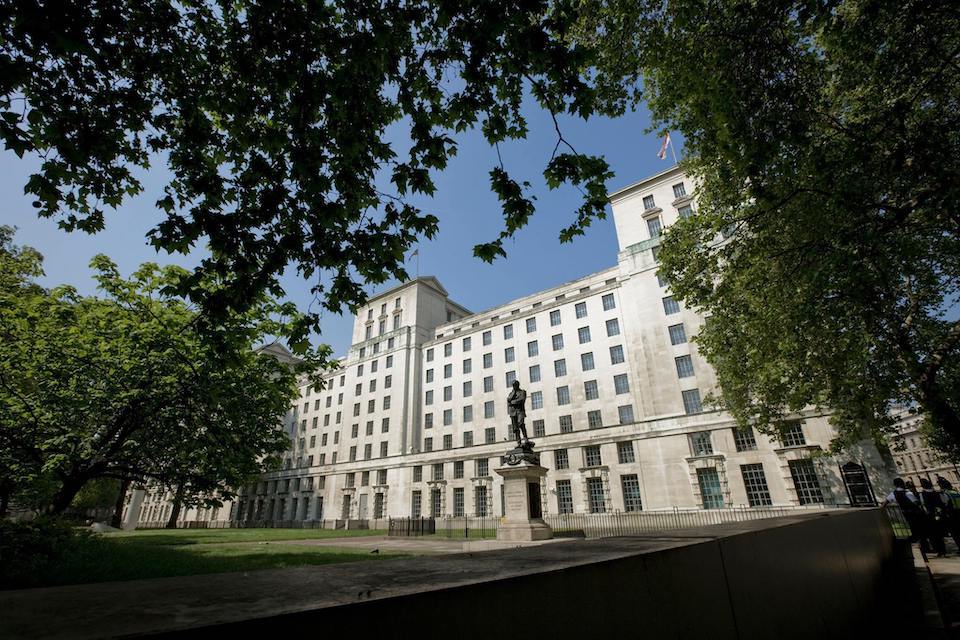It’s a well-known fact that rainy day savings are important. These rainy days can be anything from financial and medical emergencies to weddings, university fees, or moving house. But, despite the importance of having something tucked away being well-known, are people in the UK ready for that rainy day? The average savings by age statistics seem to indicate that they are not.
| Are savings important? | Absolutely! |
| How much savings is enough? | At least three months’ worth of living expenses |
| How can I increase my savings? | The smartest way to save is saving before spending |
| Saving or investing? | Investing is a much better way to put your money to use |
Unsurprisingly, people’s attitude toward having reserves differs vastly depending on their age and financial situation. However, research by the FCA in 2022 suggests that around 30% of people in the UK have no savings at all. One in three people have less than £1,000 put away, and another 18% have less than £5,000. Overall, one in four (12.9 million) adults in the UK had low financial resilience.
So, a large number of people in the UK are not inclined towards setting money aside and take it perhaps less seriously than they should, so in this Moneyfarm blog, we look at how much you should be saving each month to get you back on track.
Experts advise individuals to save at least three months’ worth of living expenses – the majority of people in the UK are not at this recommended level. There can be multiple reasons for not saving enough, but insufficient earnings are consistently among the top reasons.
Overall, the data on average savings in the UK is worrisome. In the UK, 9% of Brits have nothing set aside, while over 40% of people do not have enough put away to support themselves for a month in the absence of income. The total number of adult ISAs has been rising in recent years, while the number of people with no reserves at all is increasing. Although the number of junior ISAs is going up, the average amount invested in them is plummeting. Bank balances are dwindling, and so are the average UK savings figures.
If you want to put your money to better use, a stocks and shares ISA is the best way to protect cash from inflation and grow your money for the future. With Moneyfarm, an account gives you access to expert advice, a wealth of investment expertise, round-the-clock control and a portfolio that’s built to suit your goals. To check out your options, click the button below.
Get started today
Average savings by age in the UK
Based on the Office of National Statistics data, the average amount people have set aside predictably goes up as they get older. In 2020, the average British adult had around £6,757 saved. This number has increased as of 2023.
According to research from Finder, the average person in the UK has 17,773 in reserve as of 2023. Younger people have less set aside for many reasons, like student loans, low salaries and high expenses, while the average amount in savings increases as people get closer to their retirement age.
How about the UK average savings by age figures?
The average retirement savings by age in the UK are shown below. The data is courtesy of Finder.com.
|
Age |
Average Savings |
| Under 25 | £2,533 |
| 25 – 34 | £4,775 |
| 35 – 44 | £6,751 |
| 45 – 54 | £14,591 |
| above 55 | 35,607 |
Source Finder.com
Comparison of saving habits across generations Baby Boomers, Gen X, Millennials, Gen Z
According to Finder, as of 2023, 32% of Gen X, 22% of millennials and Gen Z, 17% of baby boomers, and 11% of the silent generation have no reserves. The only generation that cultivated a better savings habit in 2023 was the baby boomers. The number of people without reserves decreased by 1%.
People without savings increased by 2% to 10% in the other generations. The silent generation has the highest average amount at £58,606 as they have had more time to save with higher incomes. Baby boomers have an average savings of £41,804, Gen X have £12,939, while millennials and Gen Z have averages of £5,943 and £2,463, respectively.
As regards the average savings by age in the UK in terms of habits, baby boomers and the silent generation are more likely to invest for retirement, own their own homes, and have higher incomes. Gen X is more likely to save for shorter-term goals, such as holidays and weddings. Millennials are more likely to use technology and AI to manage their finances and save for specific goals, such as children’s education or a home purchase.
Currently, Gen X and Millennials are facing a few financial challenges that are altering how much they can set aside. These challenges include things such as student debt and rising house prices and cost of living. At the same time, Gen Z is more open to new financial products and services, such as cryptocurrency, and has just started developing a saving habit.
Average savings by income in the UK
Income is another critical metric that determines the average saved by age figure, in the UK. There is, understandably, a direct correlation between income and savings. People with higher incomes have more disposable cash and can save more than those with lower incomes.
However, despite their incomes, how much money people eventually save depends on several factors and their attitude towards setting money aside in general. Also, people with high incomes tend to have high expenses and need higher reserves for their retirement.
On average, low-income families in the UK have £95 set aside, while high-income families have an average of £62,885. The gap between low-income and high-income households has increased continuously and has become even more expansive thanks to the ongoing coronavirus pandemic and the current cost of living crisis.
How much should you save each month?
Retirement data can be compared and contrasted with expected savings data to see how much people should be setting aside each month. On average, Britons save roughly £105.43 per month. However, this figure varies significantly depending on an individual’s income level. The average UK savings amount to approximately 8.21% of monthly income.
A comfortable retirement income is £19,000 for a single-person household. The £19,000 can be the sum of both a private pension scheme and a state pension. Individuals need to save around £7,300 every year and hit retirement with at least £266,000 in savings to achieve this level of retirement income. Each month, with the State Pension, personal pension monthly contributions and monthly employer contributions, an individual’s pension contribution can be as low as £192.
The average Brit is some way away from the expected amount they should have set aside and needs to save a lot more to reach the recommended levels of personal reserves in the UK. Saving regularly is the key.
How much should you save at 30
The average savings by age 30 should be £51,434. However, the general rule states that the amount you should have set aside by this age should be equivalent to your annual income.
How much should you save at 40
The average savings by age goes up to £124,911 by the age of 40. The general rule for the average saved by age 40 is to have three times your pre retirement income.
How much should you save at 50 and 60
The average reserves you should have reached by age goes up to £198,390 by the age of 50, with average savings by age 60 in the UK at around £270,100. Furthermore, the average reserves in your account by age 50 and 60 should be six and eight times your pre retirement income, respectively.
Have you ever considered investing?
For a lot of people, the idea of investing their hard-earned money can be daunting. When cash is traditionally such a safe option, why risk opening your wealth up to the markets? Well, the truth is that cash isn’t the safe haven it once was.
With the Bank of England’s base interest rate at a record high of 5.0%, inflation can eat away at cash over time and actually make the purchasing power of the money you’ve set aside weaker over the years. Many people are, therefore, turning to stocks and shares ISAs to protect and grow their wealth while aiming to better the average saved by age 60 UK residents are recommended to acquire.
For more information on how sitting on too much cash can damage your reserves, read our full breakdown here. To get started with an investment portfolio that’s designed around your long-term goals, follow the button below.
Get started today
Average retirement income in the UK
The amount of money required to live comfortably in retirement varies widely from person to person, depending on their living expenses and where they want to retire. Most British citizens believe that an annual income of between £10,200 and £41,900 is likely to sustain a convenient and comfortable retirement.
Beyond that, anything extra would be considered a luxury. However, you probably won’t find anyone complaining about having more than enough money for retirement because financial situations might change over time.
Savings statistics in the UK Average savings by gender and region
The average savings by age in the UK differ vastly based on many metrics. These include gender and region, in addition to age and income. Generally, there is an understanding that women usually have less set aside than men, most likely due to issues like the gender pay gap.
On average, women in the UK have reserves of £11,698, while men have almost twice the amount, at £23,951. However, it is important to note that although more men have set aside when compared to women, the women that do tend to have more significant amounts saved than men.
Similarly, region or location is an important determinant of the average savings in the UK by age. According to research, the lowest average savers in the UK belong to the West Midlands, while the highest bracket can be found in the East of England. The average reserves of people in the East Midlands is £13,306, compared to that of £8,901 in Greater London.
The second-lowest region is Northern Ireland, at £6,710, while the second-highest is the West Midlands, with an average amount of £13,318. The average for Scottish people was approximately £21,641, while the residents in the Wales region saved on average £13,913. Such a dramatic disparity in average personal financial reserves by region in the UK can be attributed to employment opportunities and a host of other socioeconomic factors.
Average investments in the UK
With interest rates in the UK so low at the moment, millions of people are choosing to invest in stocks and shares ISAs to protect and grow their wealth. The meaningful tax breaks afforded to those investing for the long term, make ISAs a smart way to build towards meeting or beating the average savings by age 60 in the UK. Also, a new type of wealth management has emerged to cater to a population with changing priorities and demands.
Since 2008, the average amount invested in a stocks and shares ISA has tripled. This is because people in the UK have been increasingly taking advantage of the tax incentives and positive returns of ISA portfolios, with the average amount invested in a stocks and shares ISA going from £3,281 in 2008 to £9,331 in 2019. This trend was due to low-interest rates and returns from cash accounts lagging behind rising inflation.
The year 2020 saw the lowest average amount invested in stocks and shares ISA since 2016/2017. The average amount invested in a stocks and shares ISA in 2020 was down by 5% at £8,879. However, the total amount invested in stocks and shares ISA in 2020 was over £24 billion, a £1 million increase from 2019 and a 14% increase since 2015/1016. The drop in the average amount invested in 2020 was due to the economic downturn caused by the pandemic and the unprecedented volatility of the stock market. As of 2021, the UK has 12.2 million ISA subscribers, and 3.5 million are stocks and shares ISA with £33.853 billion invested.
Stocks and shares ISAs can be opened with a range of risk levels to cater for different investors’ attitudes. If you want your cash to grow slowly but steadily over the years, as you try to reach the average savings by age 60 in the UK, a low-risk portfolio could be the most suitable. Conversely, those who want their cash to grow more but are willing to accept a greater degree of risk can take out higher-risk portfolios. However, most investors will fall somewhere in the middle of this scale.
Factors that affect average savings
The average savings in any country are created by a number of contributing factors. Some factors influence savings at the macro level, while many others have an impact on an individual level. On a larger scale, average savings are impacted by the economic growth of a nation and the prevalent interest rates.
While higher interest rates make savings more attractive and increase the average amount saved, higher economic growth tends to increase spending and reduce savings. Additionally, high levels of inflation may discourage cash reserves but increase the appeal of assets.
From an individual perspective, average savings are heavily influenced by cultural trends. Some cultures have a tendency for higher saving, while others have a spending culture. Levels of income and average age play a significant role in determining the average amount of money set aside per country
The average amounts of reserves are less for younger people, and they steadily increase until the age of 50-60. They then go down post-retirement as the income typically stops altogether. Similarly, higher income levels also enable higher savings when compared to lower-income households.
Impact of economic downturns in the UK on savings?
Individuals’ saving habits have been significantly impacted by the UK’s cost of living crisis. People frequently lose their employment or have their hours slashed during economic downturns. This can result in a drop in income, which makes it challenging to reach even the average savings by age figures..
With the cost-of-living crisis, it has become increasingly challenging for people to conserve money since the cost of necessities like food, energy, and housing has increased. People are setting less aside or digging into their reserves to relieve the financial burden. In 2022, the FCA stated that 24 million adults in the UK have difficulties paying bills, and half do not have savings to cover 3 months of expenses.
To rein down inflation, the Bank of England has also boosted interest rates. Because of this, borrowing money has become more expensive, which can make setting money aside more challenging. As of May 2023, 29% of UK adults experienced a mortgage payment increase. And 34% have experienced rent increases. The current rising cost of living, whilst slowing down, will still have a negative impact on the average savings in the UK, especially for low-income earners.
Quick ways to increase your savings
One look at the data around average savings by age in the UK shows that the situation is problematic. Far more than an acceptable number of people in the UK have no reserves at all, while many have insufficient to protect them in the event of a loss of income. Therefore, the need for the average person to consider setting money aside for rainy days has never been greater.
The smartest way to save is ‘saving before spending’. To get a substantial average savings by age 60 in the UK means putting money into savings immediately after payday and spending the remaining amount accordingly. Current technology also means people can automate the saving process in its entirety. Various smartphone apps are equipped to analyse individuals’ income and spending habits, decide on the appropriate amount of reserves, and deduct the decided amount automatically every month.
Another smart way to save and have adequate average savings by age 60 in the UK is to make setting money aside as secure as possible while also making it relatively inaccessible, so that you don’t dip into them as soon as you fall short of money or give in to making an impulse purchase. It is important to follow the quick methods to increase your reserves to prepare you for emergencies and enter your retirement with a sufficient amount of savings to maintain a comfortable lifestyle.
Moneyfarm Liquidity+ Investing
With the unveiling of Liquidity+, this new alternative promises a gross annualised yield currently exceeding 5.2%. It comes with a conservative risk profile and straightforward, competitive costs. More than just a low-risk asset containing bonds, CDs, and commercial paper, it’s a smart strategy for short-term financial objectives.
Benefiting from the uptick in yields due to recent rate increases, it facilitates a customised market entry strategy. A fund with an annual yield of over 5.2% diminishes risk, amplifying the significance of liquidity through a thoughtfully constructed solution. Liquidity+ has the potential to enhance the average amount of money set aside by UK residents, providing a robust alternative to traditional savings methods.
Crafted for a duration of up to 2 years, Liquidity+ offers versatility, enabling immediate fund exits or transfers of funds to another portfolio. Our Asset Allocation specialists choose the finest money market funds for Liquidity+ and keep a close eye on both performance and risk, initiating necessary modifications. Support is available to ascertain Liquidity+’s position in a portfolio, ensuring it matches financial targets and risk preferences.
Persistent performance oversight ensures all investment objectives are seamlessly achieved. With a clear 0.3% management charge (VAT included) + an additional 0.1% for underlying funds, Liquidity+ not only provides transparent and competitive fees but also guarantees precision in every investment handling.
FAQ
What is the average saved by age amount?
The average amount of reserves for ages 18 – 24 is £2,481. The average for ages 25 – 34 is £3,544. The average for ages 35 – 44 is £5,995. The average for ages 45 – 54 is £11,013. The average savings by age 55 in the UK is £20,028.
How much should a 25-year-old have in their savings?
A 25-year-old should have at least £20,400 in reserves and should allocate at least 10% of their income to their savings.
How much savings do most 30-year-olds have?
Most 30-year-olds in the UK have between £3,544 and £5,995 in savings.
*As with all investing, financial instruments involve inherent risks, including loss of capital, market fluctuations and liquidity risk. Past performance is no guarantee of future results. It is important to consider your risk tolerance and investment objectives before proceeding.








